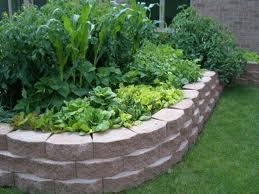
The first thing that struck me was here was someone who had just lost their source of income, but they had also gained something they may not have had before and that is time. Now she could prepare more time-consuming but less expensive, more nutritious food for her family. Yet she had chosen to purchase food that required minimal preparation time, was costly and for the most part lower in nutrition.
The second thing that struck me was that this woman now could have the time to devote to gardening for food to feed her family. I don’t know if she had a yard with room for a garden, had access to a community garden plot or had a friend or relative with room for a garden but if she did, then gardening for food was right for her. She could feed her family fresh veggies and also preserve some of the bounty of the garden for later consumption. Eating more nutritious food at a lower cost is a win/win situation. This is especially true as the bounty of summer gardens begins to fill our tables.
I’ve been gardening for food for many years, not because I can’t afford to buy processed foods but because I want the freshest, most nutritious organic and non-genetically engineered food possible. I want to know where my food comes from, how it was grown and I want it year round. I started with several 4 ’x 8’ raised beds and every year I added one or two more until I now have 32 raised beds. No one needs 32 raised beds for a family of two, so much of what I grow is given away and I take great pleasure in being able to do this.
Gardening for Food includes home-grown veggies such as tomatoes, summer squash and eggplant that you plant in the spring to eat in the summer plus winter-planted veggies such as garlic, onions and potatoes that can be stored and enjoyed months after harvest. The garlic we grow usually lasts for almost a year. Onions will last for months and we never have to buy potatoes between June and December.
Another spring or early summer veggie I love are shell beans as they last forever, and when you grow your own and get used to eating beans that are less than a year old you realize how much more flavorful they are at a young age. A few years ago we started growing Floriani Red Flint Corn, which is widely planted in Italy for grinding and making polenta. You’ve never had polenta as rich and flavorful as that made with your own Floriani Red Flint Corn.
Last but not least are the veggies that are planted in late summer to early fall. These include broccoli, cabbage, cauliflower, kale, kohlrabi, chard and lettuces. It’s very rewarding to watch them grow and be available to you.
Gardening for food also includes preserving some of the harvest through canning, freezing or drying so that you can enjoy the production of your garden months later. In our house, there is no such thing as too many tomatoes. Some of what isn’t eaten fresh is skinned and seeded, becoming first tomato sauce and then catsup, chili sauce, BBQ sauce, marinara sauce or reduced until it becomes tomato paste. Other tomatoes are canned whole or chopped up and canned as salsa. Chile peppers are roasted and then frozen for use later in many southwestern dishes. We dry chiles, tomatoes and herbs for use as seasonings year round.
It’s been over five years since I saw this story on the news, but I haven’t been able to get the woman out of my mind. My hope is that one person will read this article and start gardening for food and then tell another person until we have everyone eating less expensive and more nutritious food day in and day out.
Vegetable Workshop: Napa County Master Gardeners will lead a workshop on “Cool Season Veggies” on Sunday, August 18, from 2 p.m. to 4 p.m. at the Yountville Community Center, 6516 Washington Street, Yountville. Learn how to grow your own vegetables even when days are short and nights are cold. The key is starting while weather and soil are still warm. Learn which vegetables will thrive in cooler temperatures, how to protect them from heat when they are getting started, and how to time plantings for months of harvest. Cost is $15 per person ($10 for Yountville residents). Class size is limited and pre-registration is required. Register through Town of Yountville, Parks and Recreation: Mail in or Walk in registration (cash or check only). For additional information, call (707) 944-8712 or visit their web site.
Master Gardeners are volunteers who help the University of California reach the gardening public with home gardening information. Napa County Master Gardeners ( http://ucanr.org/ucmgnapa/) are available to answer gardening questions in person or by phone, Monday, Wednesday and Friday, 9 a.m. to Noon, at the U. C. Cooperative Extension office, 1710 Soscol Avenue, Suite 4, Napa, 707-253-4143, or from outside City of Napa toll-free at 877-279-3065. Or e-mail your garden questions by following the guidelines on our web site. Click on Napa, then on Have Garden Questions?
Open Garden Days: Napa County Master Gardeners welcome the public to their demonstration garden at Connolly Ranch on the first Thursday of every month, from April through October, from 10:30 a.m. to noon. Master Gardeners will be on hand to answer questions. Connolly Ranch is at 3141 Browns Valley Road in Napa.